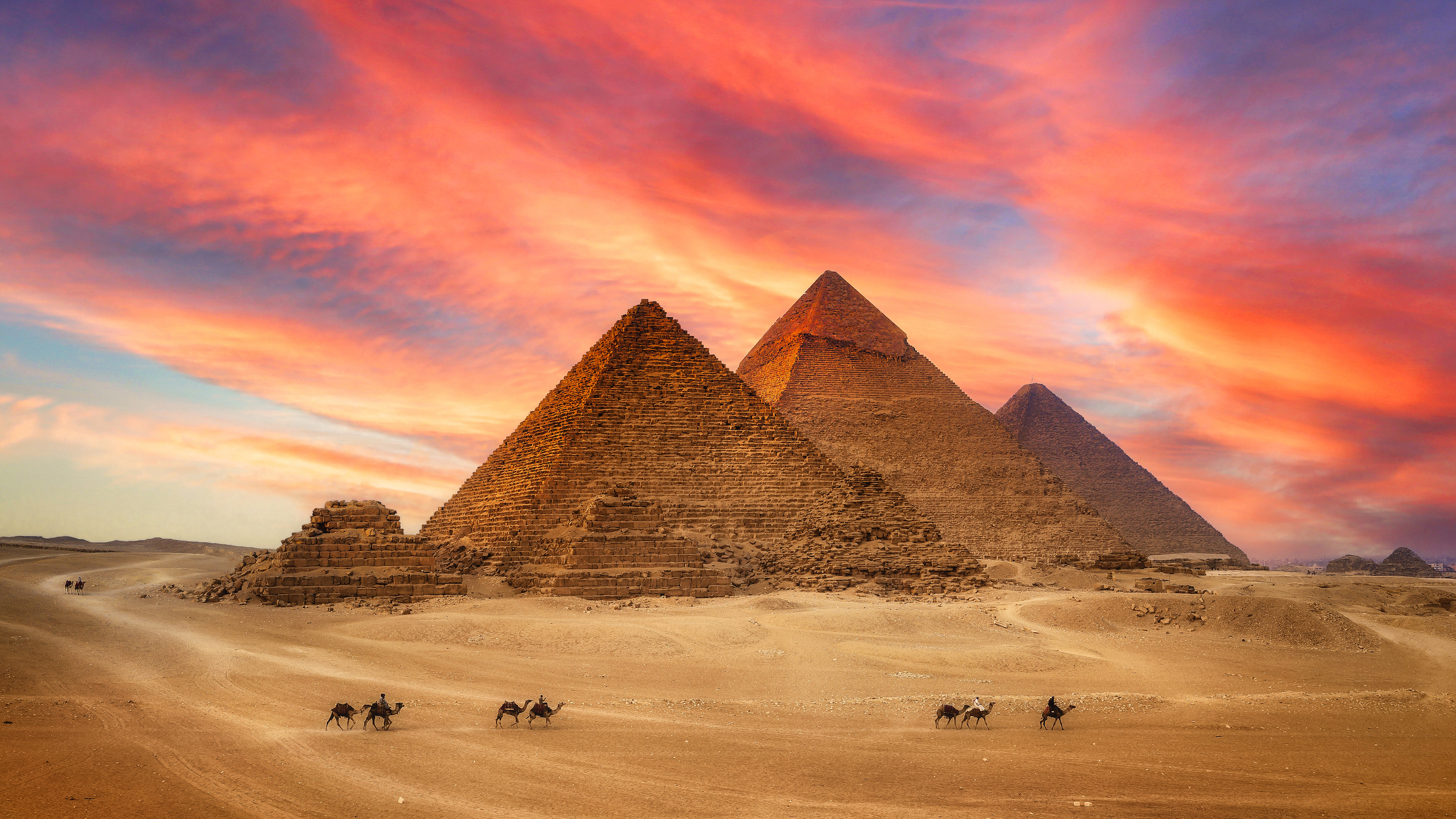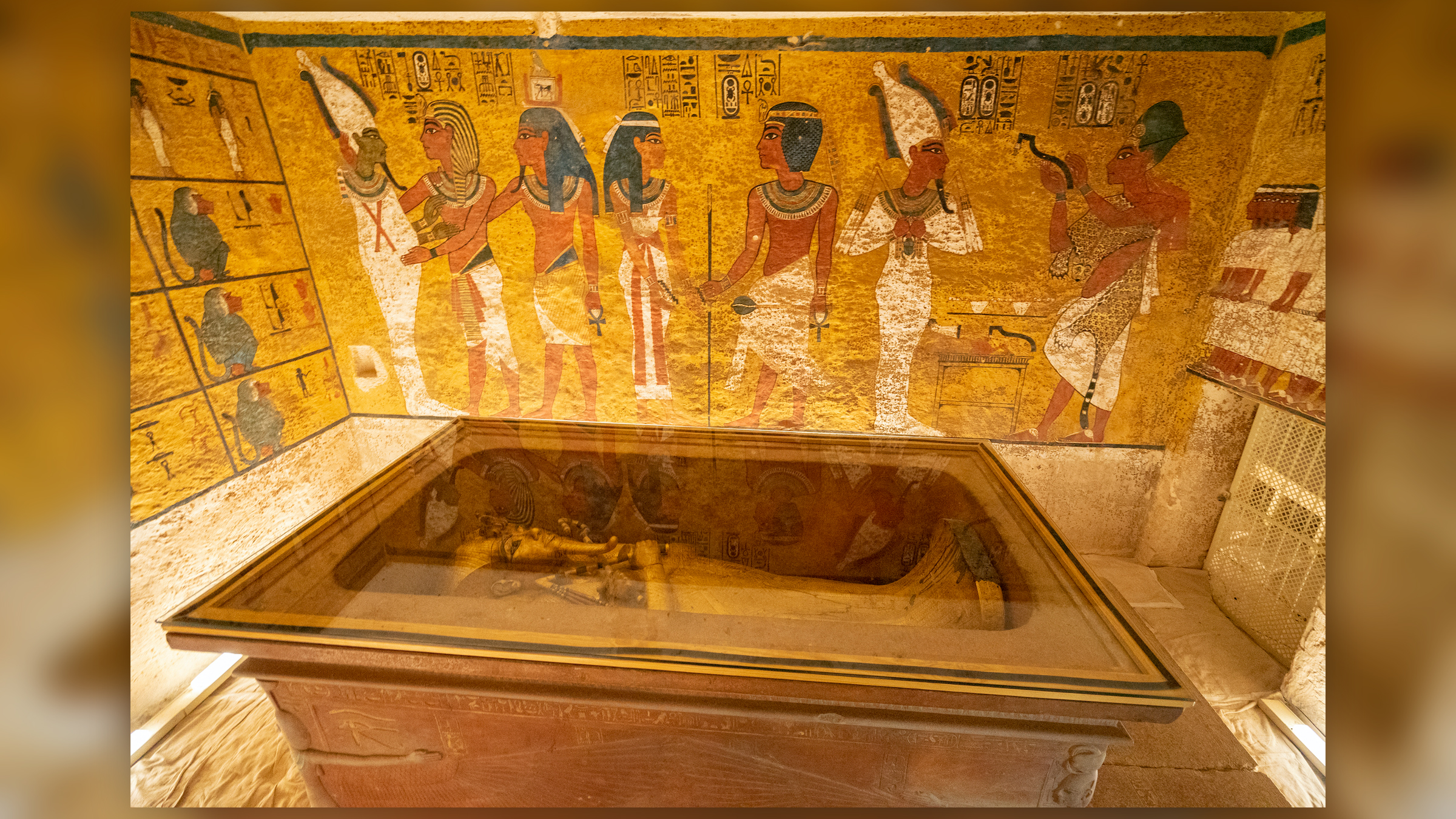
What did ancient Egypt's pharaohs stash inside the pyramids?
Did the pharaohs have lavish grave goods?

When British archaeologist Howard Carter cracked open King Tutankhamun's tomb in 1922, he reported seeing "wonderful things." Tut's tomb was filled with extraordinary treasures, including the golden death mask of Tutankhamun, a golden throne and even gold sandals. But did all royal tombs in ancient Egypt have such plush grave goods?
The answer is no. While the Great Pyramid of Giza and other ancient Egyptian pyramids are incredible monuments, the burial goods inside them were likely relatively modest compared with those buried in the tombs of later pharaohs, such as Tutankhamun.
"The burials in the biggest pyramids might have looked quite simple in comparison to Tutankhamun," Wolfram Grajetzki, an honorary senior research fellow at University College London in the U.K. who has studied and written extensively about ancient Egyptian burial customs and burial goods, told Live Science in an email.
Pyramids were used as Egyptian pharaohs' tombs from the time of Djoser (reign circa 2630 B.C. to 2611 B.C.) to Ahmose I (reign circa 1550 B.C. to 1525 B.C.). Most of these pyramids were plundered centuries ago, but a few royal tombs have remained relatively intact and provide clues about their treasures, Grajetzki said.
Related: Who built the Egyptian pyramids?
For instance, Princess Neferuptah (who lived around 1800 B.C.) was buried in a pyramid at the site of Hawara, around 60 miles (100 kilometers) south of Cairo. Her burial chamber was excavated in 1956 and "contained pottery, a set of coffins, some gilded personal adornments and a set of royal insignia that identify her with the Underworld god Osiris," Grajetzki said.
King Hor (who lived around 1750 B.C.) was buried with a similar set of objects, although he wasn't buried in a pyramid, Grajetzki said. "The body of [Hor] was wrapped in linen, the entrails placed into special containers, called canopic jars," Grajetzki said. "His face was covered with a mummy mask."
Sign up for the Live Science daily newsletter now
Get the world’s most fascinating discoveries delivered straight to your inbox.

The tomb of Queen Hetepheres, the mother of Khufu (the pharaoh who built the Great Pyramid), is a bit more elaborate. Built at Giza, the tomb had a bed and two chairs that were decorated with gold, along with pottery and miniature copper tools, Grajetzki wrote in an article published in January 2008 in the magazine "Heritage of Egypt."
The substructure (the lower part) of the unfinished pyramid of King Sekhemkhet (circa 2611 B.C. to 2605 B.C.) was found unrobbed at Saqqara, Reg Clark, an Egyptologist who is author of the book "Securing Eternity: Ancient Egyptian Tomb Protection from Prehistory to the Pyramids" (American University in Cairo Press, 2019), told Live Science in an email. The king's sarcophagus was empty, but archaeologists did find "21 gold bracelets, a golden wand or sceptre and various other items of gold jewellery" in a corridor, Clark said. While these are impressive burial goods, they don't come close to the riches found in Tutankhamun's tomb.
The artifacts found in these royal burials suggest that pharaohs entombed in pyramids were probably buried with grave goods that were more modest than those found buried with Tutankhamun, Grajetzki noted. Unlike the early pharaohs, Tutankhamun's tomb was located in the Valley of the Kings — a remote valley near modern-day Luxor that was used as a royal burial site for over 500 years during the New Kingdom, according to Britannica.
"This does not mean that he [Khufu] was poorer [than Tutankhamun]. His pyramid proves the opposite. He was just buried following the customs of his day," Grajetzki wrote in the article.
Large treasures haven't been discovered in any of the known Egyptian pyramids. "There were no large 'treasures' in the pyramids, like in the tomb of Tut," Hans-Hubertus Münch, a scholar who has researched and written about ancient Egyptian burial finds, told Live Science in an email. In addition, no tomb containing vast amounts of lavish grave goods has been found dating to earlier times when pyramids were built, Münch said. He noted that during the New Kingdom (circa 1550 B.C. to 1070 B.C.), a time when pyramid building ended, the amount of lavish grave goods buried with royal and non-royal individuals increased.
During the New Kingdom, people, if they had the ability, tried to put large numbers of ornate objects in their tombs. "This enormous mass of objects in tombs is only an invention of the New Kingdom," Münch said. Why exactly they wanted to do this is not entirely clear.
Pyramid texts
While the burial goods inside the pyramids were modest compared with later ancient Egyptian tombs, some of the pyramids had lengthy hieroglyphic inscriptions on their walls, which scholars today call the "pyramid texts." The texts record a large number of "spells" (as Egyptologists call them) and rituals.
The pyramid of Unis or Unas (reign circa 2353 B.C. to 2323 B.C.) was the first pyramid to have these texts on its interior walls, while the pyramid of Ibi (reign circa 2109 B.C. to 2107 B.C.) was the last known case, James Allen, an Egyptology professor at Brown University, wrote in the book "The Ancient Egyptian Pyramid Texts" (Society of Biblical Literature, 2005).
The function of the pyramid texts "was to enable the deceased to become an akh," a spirit that exists in the afterlife, Allen wrote. The spells aimed to reunite the "ka" and "ba" — parts of a person's soul that the Egyptians believed were separated at death.
The appearance of these texts "probably reflects a shift or innovation in the ancient Egyptians' ideas of the royal afterlife," Allen told Live Science. In earlier times, documents like the Pyramid Texts may have existed, but, for whatever reason, they started being written on the pyramid walls in the time of Unis.
Originally published on Live Science.

Owen Jarus is a regular contributor to Live Science who writes about archaeology and humans' past. He has also written for The Independent (UK), The Canadian Press (CP) and The Associated Press (AP), among others. Owen has a bachelor of arts degree from the University of Toronto and a journalism degree from Ryerson University.









